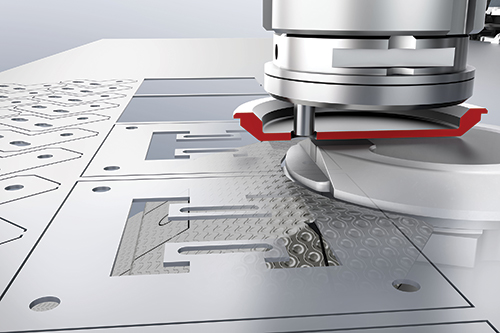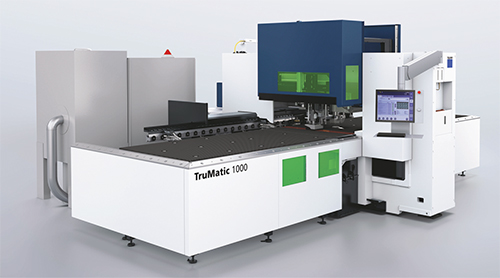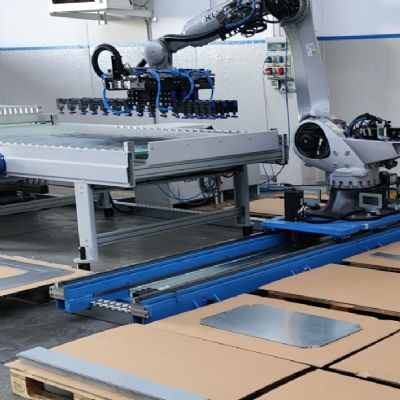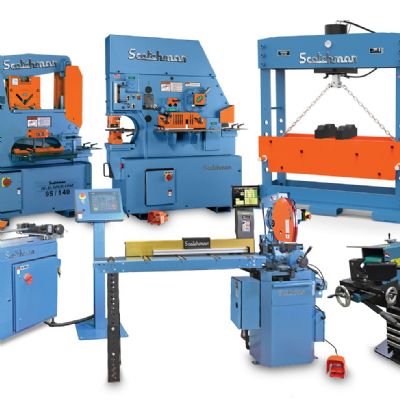Multiple Process in One Location
Successful job shops gain efficiencies by performing as many actions as possible at a single location.
“I’ve seen fabricators embrace the ability to conduct multiple operations at one machine stop,” says Welz. “At one machine a user may countersink, place holes, tap certain holes, etc. In contrast, transporting a part from one location to another to perform these functions, and then tracking that part throughout the process, is extremely costly.”
In assessing the value of a combination punching machine and laser cutter, Welz explains, fabricators should consider the entire throughput time, and not be hung up on processing time for a single operation. Focusing on single-operation time may lead fabricators to send parts from location to location, where advantages of a quick operation are more than negated by the aforementioned travel inefficiencies. While a laser-cutting machine can take 1 to 2 sec. to create a hole, a punch machine may take a quarter of a second, if that. Welz cautions not to try switching from machine to machine to capture those speed differences.
“For example,” he says, “a job shop may need to make a 12 by 16-in. part from 1⁄8-in.-thick material, and this part requires a series of holes and a countersink as well as some tapping. The job shop first takes that job to a laser-cutting machine, which rips through its tasks in 8 sec. Now this unfinished part is removed from that machine and placed in a bin for travel to another machine for another task. In this process, the quick laser-cutting speed is negated and then some.”
Multiply that by the number of processes and station changes, and the efficiencies of a laser or punching machine are removed.
“A combination laser-cutting and punching machine, on the other hand, performs all of the required processes in one station, with the same edge and hole quality gained by using those machines separately,” says Welz. “From a throughput standpoint, when looking at the time allotted for creation of a complete, finished part, a fabricator often will see that the combination machine is much faster because the entire process has been enveloped in a single station. This is a very diverse piece of equipment that can adapt to incoming projects, and do so economically.”
Offering the Latest Technology
Combination laser and punching machines certainly have shown their worth, bringing the best of both processes in a single platform, and incorporating advances in each of the technologies. An example, explains Welz, is Trumpf’s 2016 introduction of a new combination punching and fiber-laser machine.
“Fiber lasers have become the accepted laser performers in the fabrication market, due to rapid cutting speed, reduced maintenance requirements and process stability,” he says. “The ability to marry the fiber laser and punching machine on an economical platform has been well-accepted in the market.”
With JIT and lean manufacturing, running thousands upon thousands of the same part no longer is common for job-shop fabricators. As punching machines offering increased speeds and process capabilities combine with improved laser technology, thriving in a low-volume, high-mix environment is well within reach. MF
See also: TRUMPF Inc.
Technologies: CNC Punching, Cutting











